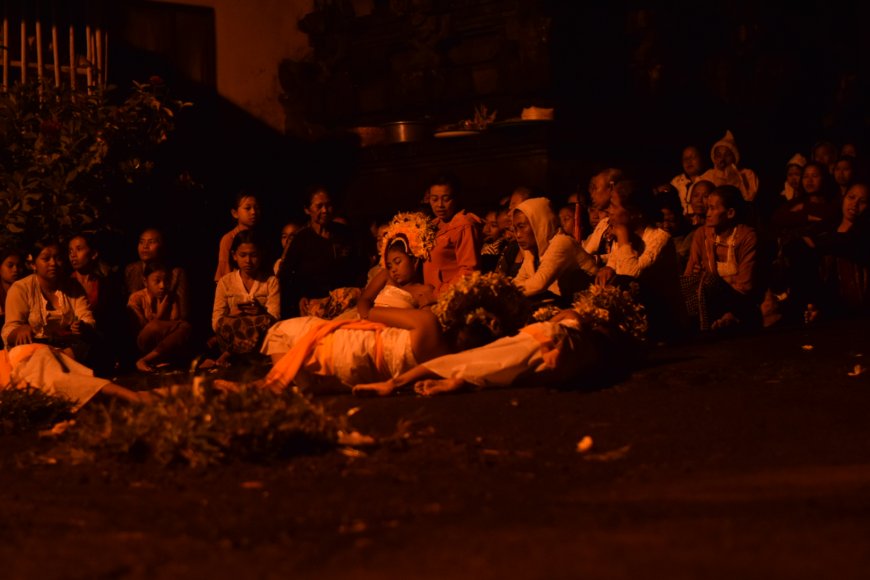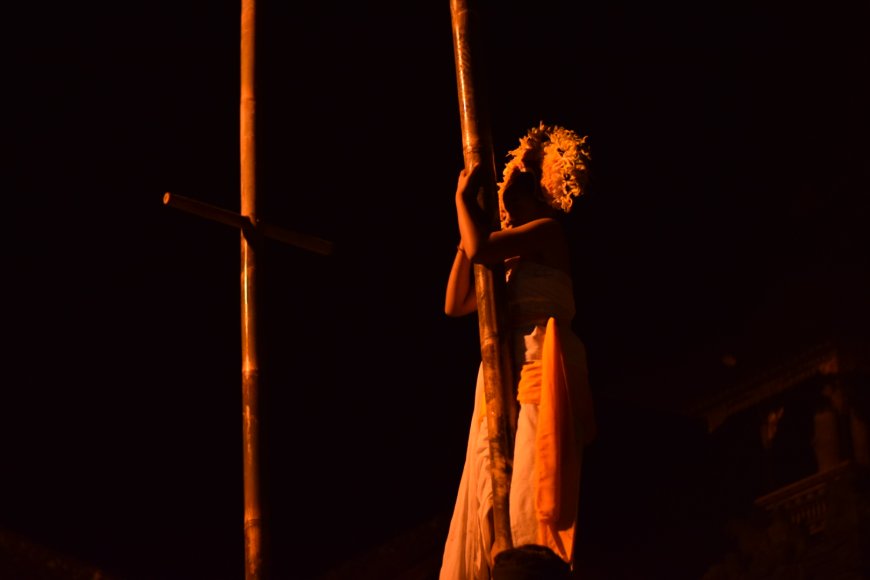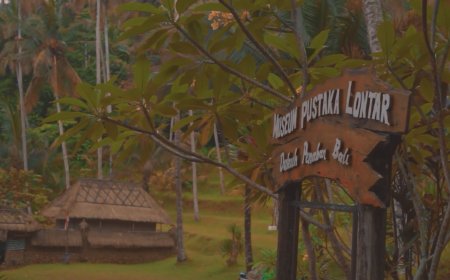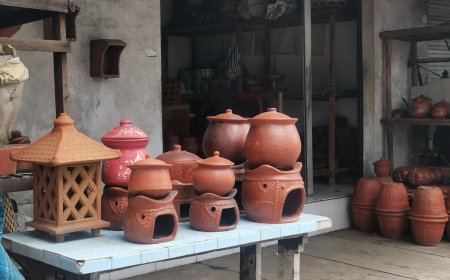Sang Hyang Dedari Dance Spiritual and Cultural Wonders of Bali
The Sang Hyang Dedari dance is an extraordinary example of the deep-seated art, culture, and spirituality in Balinese society. With its beautiful costumes and mesmerizing movements, this dance creates an unforgettable experience for anyone who witnesses it. However, beyond being a mere artistic performance, the Sang Hyang Dedari dance is an expression of faith, belief, and the beauty of everyday life in Bali's rich cultural heritage. It remains a symbol of grace and spirituality in Balinese culture that deserves respect and preservation.

Sang Hyang Dedari Dance (Source: Personal Collection)
Bali, an island in Indonesia known for its natural beauty, rich culture, and captivating art, is also home to various traditional dances that enchant its visitors. One of the most frequently performed dances is the Kecak dance. Long before the Kecak dance gained fame as a secular performance, it served as a companion dance to the Sang Hyang dance. The difference lies in the fact that the Kecak dance features episodes from the Ramayana, while the Sang Hyang dance is presented as a performance without a specific storyline. One of the Sang Hyang dances currently garnering attention is the Sang Hyang Dedari dance. This dance is not just about beautiful movements; it also reflects deep spiritual and cultural values within Balinese society.
The Sang Hyang Dedari dance is a sacred dance rooted in Balinese Hindu beliefs. The word "Sang Hyang" in Balinese language means "deity" or "holy spirit," while "Dedari" translates to "nymph" or "angel." Therefore, this dance is a form of homage to the deities and is performed in various religious or traditional ceremonies in Bali. It is also believed by the Hindu community to be a dance that can ward off danger in Bali. The Sang Hyang Dedari dance has been present since pre-Hindu times and continues to exist today. Over time, the dance has adapted to various developments, leading to changes in its functions, costumes, facial makeup, and accompanying music, culminating in the establishment of seka (a dance organization) dedicated to Sang Hyang Dedari.
As time has passed, this dance was once rarely seen in sacred ceremonies in Bali and was even considered endangered. However, it turns out that in the Adat Village of Geriana Kauh, Selat, Karangasem, this dance is still frequently performed during specific ceremonies. One of the most striking aspects of the Sang Hyang Dedari dance is the costume worn by the dancers. The dancers wear pristine white attire, symbolizing purity and sanctity. They also adorn beautiful floral crowns on their heads. This costume creates an impression of simplicity and tranquility, in contrast to the dynamic movements within the dance.
The movements in this dance are very gentle and graceful, depicting the gracefulness of the nymphs in Hindu mythology. The dance movements also reflect the journey of the spirit from the human world to a higher spiritual realm. This is a spiritual offering considered sacred in Balinese tradition.
This dance is typically performed by a group of young girls, usually consisting of 3 to 5 dancers, who are selected from the village community. They are chosen based on their purity and sanctity, their ability to undergo spiritual transformation during the dance performance, and most importantly, the dancers have not yet reached puberty.
The Sang Hyang Dedari dance typically begins at 9:00 PM (WITA, Waktu Indonesia Tengah), starting with a series of strict spiritual ceremonies. One of these rituals is known as nusdus or, in some regions, ngukup. Nusdus marks the beginning of every Sang Hyang Dedari performance. In this ritual, the main principle is the purification of the dancers, and during this stage, the dancers start to lose their consciousness or enter a state referred to as kerawuhan, which is akin to trance. The nusdus process commences after the dancers put on white clothing and attire, along with their accessories.
During the nusdus ritual in the Sang Hyang Dedari dance, the dancers begin by sitting cross-legged facing a smoking hearth, known as pasepan in Balinese. The dancers remain in a seated position, with their heads slightly bowed, their hands approaching the smoke of the hearth. Then, one of the attendants or companions in the Sang Hyang performance covers both ears of the dancer with their palms. During this ritual, sacred chants are sung by a group of around 30 women with the aim of invoking the sacred spirits to descend and enter the souls of the dancers.

Unconscious State(Source: Personal Collection)
After chanting spiritual songs, the dancers become increasingly unconscious and start to collapse. Dancers who have entered a state of trance are then taken to a village crossroads to prepare for mesolah. Mesolah is a term that signifies the dancers will dance in an unconscious state. In their trance state, the dancers move around the temple or performance area, accompanied by lyrical chants sung by a group of women. For performances related to the expulsion of diseases or warding off danger, the dancers are paraded around the village, sometimes carried by one or two men.

Dancing on Bamboo Poles (Source: Personal Collection)
For dances that are not intended to ward off danger, the dancers will not dance around the village but instead will climb two bamboo poles provided in the center of the area. The dancers will climb the bamboo poles in an unconscious state and then resume their dance with their eyes closed. Before concluding their dance, the dancers sprinkle holy water and distribute flowers to the people gathered around the performance area. These flowers and holy water are believed to possess magical powers that can protect the community from various dangers. For the local residents, this is a highly anticipated moment to receive blessings from the Sang Hyang Dedari dancers.
After the dance is completed, there is also a ritual or ceremony that must be performed. This ritual is called ngaluhur which is the third and final stage aimed at returning the consciousness of the dancers and escorting the sacred spirits that have resided within them back to their original state. This process is conducted with the accompaniment of songs sung by a group of women. Once the dancers regain their awareness, they proceed to remove the attributes used during the performance. As a result, the dancers are left wearing their original white attire, consisting of a white cloth and kebaya.
As time has passed, the Sang Hyang Dedari dance, which should have had high spiritual value, has unfortunately been transformed into a profane performance. This phenomenon occurred at a palace located in Ubud. As it is known, Ubud is a bustling tourist village visited by international tourists, a place where world-renowned artists seek inspiration. The natural beauty and traditional way of life in Ubud have attracted tourists since the 1900s. In Ubud, there are also many palace attractions. Some palaces have been developed into cultural tourist attractions, including Puri Saren Agung, Puri Kantor, Puri Lotus, and others. During the day, tourists flock to admire the palace architecture, while in the evening, the palaces are frequented by tourists to watch artistic performances. However, among the artistic performances presented in the tourism context in Ubud, there is the Sang Hyang Dedari dance performance located in Puri Saren Agung, Ubud.
The rapid growth of the tourism industry in Ubud has prompted the management of Puri Saren Agung Ubud to develop their palace as a tourist attraction. However, there are some differences in the presentation of the Sang Hyang Dedari dance in this tourism context. The differences are in the performance structure, which consists of the following roles: pengawit (narrator), pengawak (supporting dancers), pengecet (the dancer who enters a trance), and pekaad (the priest or spiritual leader).
Puri Saren Agung Ubud presents the Sang Hyang Dedari dance in a tourism context due to the presence of market opportunities, such as the growing tourism industry in Ubud and the availability of local artistic talent capable of showcasing tourism performing arts. In this tourism context, Puri Saren Agung Ubud interprets the Sang Hyang Dedari dance performance as a form of artistic creativity, an economically valuable tourism product, and a means of fostering social relationships within the community. This, in turn, has implications for the preservation of traditional performing arts in the region in the global era.
Through the performance of the Sang Hyang Dedari dance in the tourism context at Puri Saren Agung Ubud, one can gain insights into the values that underlie the local community's way of life. In other words, through this dance performance, spectators can obtain a glimpse of the distinctive cultural identity within the framework of a tourism presentation. The elements of local wisdom integrated into the aesthetics of this new creative dance performance can convey an image of harmony in the lives of the local community to the audience.






























































